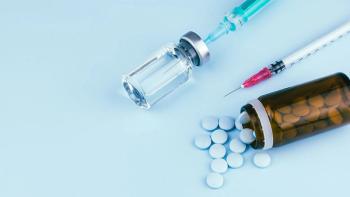
PTSM: Pharmaceutical Technology Sourcing and Management
- PTSM: Pharmaceutical Technology Sourcing and Management-12-04-2013
- Volume 9
- Issue 12
The Global Divide in Pharma Industry Growth
Global spending on medicines is expected to meet the $1 trillion threshold in 2014 and reach $1.17 trillion by 2017, according to a recent report by the IMS Institute for Healthcare Informatics
Global spending on medicines is expected to meet the $1 trillion threshold in 2014 and reach $1.17 trillion by 2017, according to a recent report by the IMS Institute for Healthcare Informatics. The report, The Global Use of Medicines: Outlook through 2017, found that growth in global spending on medicines increased 2.6% to $965 billion in 2012 and is forecast to grow at a 3–6% compound annual growth rate (CAGR) over the next five years.
IMS projects a gradual increase in global medicine spending growth during the next five years. Annual growth in spending is expected to rise from 2–3% in 2013 to 5–7% in 2017, the highest pace of growth since 2009. The absolute global spend for pharmaceuticals will increase by $230–260 billion on a constant dollar basis compared to the $217 billion in the past five years. The single largest impact on growth levels is the continuing effect of many blockbuster drugs coming off patent and an increase in lower-cost generic alternatives. In addition, the gradual return of global growth in gross domestic product (GDP) to more than 4% by 2017 will contribute to an upward trend in medicine spending levels.
“As we pass the fifth anniversary of the global economic slowdown, and with many countries moving toward universal health coverage, we expect to see continued divergence in growth rates between the pharmerging and developed markets,” said Murray Aitken, executive director of the IMS Institute for Healthcare Informatics, in an IMS press release. “Austerity measures aimed at medicine budgets along with the growing availability of lower-cost generics will lead to annual spending growth of 1–4% among the markets of North America, Europe, and Japan. In contrast, pharmerging nations will experience 10–13% spending growth.”
In 2012, the developed markets in aggregate reduced their medicine spending for the first time due to patent expiries and austerity measures, along with policy changes to increase generic-drug penetration, according to IMS. Growth in developed markets will rebound from negative $3 billion in 2012 to $20 billion to $25 billion by 2017. The US will resume increased spending levels in 2014 after two years of reduction due to expansion of healthcare access and lower patent-expiry levels. Growth in the “pharmerging” markets, as defined by IMS, will increase from $26 billion in 2012 to between $30 billion and $50 billion in 2017, primarily due to increased access to medicines as infrastructure and health systems evolve, notes IMS. The pharmerging countries include China, Tier 2 countries (Brazil, Russia, and India), and Tier 3 countries (Mexico, Turkey, Venezuela, Poland, Argentina, Saudi Arabia, Indonesia, Colombia, Thailand, Ukraine, South Africa, Egypt, Romania, Algeria, Vietnam, Pakistan, and Nigeria).
Developed markets’ outlook
The developed markets of North America, Europe, and Japan will see modest single-digit spending growth during the next five years due to a combination of economic and healthcare austerity measures and savings realized from the growing availability of lower cost generic versions of brands following their patent expiry.
In the US, the next five years will see the greatest impact from the implementation of the Affordable Care Act, notes IMS. IMS notes that the uncertainty ranges from the level of enrollment of the currently insured to the speed with which the payment system changes from one based on fee-for-service to one based on performance and patient outcomes. The change in the service-delivery model, including the corporatization of medical care and the relative negotiating power between payers and providers, will impact medicine spending, though the direction and magnitude of that impact is uncertain, notes the IMS report. For the US pharmaceutical market, IMS estimates a compound annual growth rate (CAGR) of 1 to 4% from 2013–2017. The US pharmaceutical market is projected to reach between $350 billion and $380 billion by 2017. Patent expiries and the impact of low-cost generics will impact spending growth throughout the forecast period, which had their strongest impact in 2012 and 2013. Less impact from expiries contributes to approximately half of the higher market growth in 2014 relative to 2013.
Pharmaceutical spending growth in the EU5 (Germany, France, Italy, United Kingdom, and Spain) is expected to between zero and 3% for the period of 2013 to 2017 compared to 2.4% for 2008–2012, notes the IMS report. Pharmaceutical spending in the EU 5 is projected to reach $140 billion and $170 billion in 2017, according to IMS. Europe has seen a greater adoption of generics and more restrictive policies that have made patients in almost all European countries less likely to gain access to innovative medicines, notes the IMS report. The performance of the European pharmaceutical industry during the next five years will depend on the extent of the economic recovery in Europe. Higher growth is anticipated in Germany and the United Kingdom compared to Spain, Italy, and France as these markets already have generically efficient markets. All five major European countries have seen a lower uptake of new medicines in the most recent five-year period. Germany and the UK had strong uptake controls prior to the financial crisis and see the least deterioration.
In Japan, forecast spending growth of a 2–5% CAGR is projected from 2013 to 2017, notes IMS. In Japan, the key issue is the establishment of a generic-drug market, driven by the Japanese Ministry of Health, Labor and Wealth’s (MHLW) goal of increasing generic volume as a percentage of generic and listed drugs to 60% in 2018. If the MHLW is successful, it would mean that 2018 generic levels in Japan would be at a level similar to that of France and Spain.
Emerging market growth
For the “pharmerging” markets, IMS projects that the market will increase at a CAGR of 10–13% and reach between $370 billion and $400 billion by 2017. For China, the largest pharmerging market, IMS projects a CAGR of 14–17% in the next five years with the market reaching between $160 billion and $190 billion by 2017. Despite the healthy projections, pharmaceutical industry growth in China was revised downward due to a slowdown in GDP growth due to a loss in business confidence, along with lower investment, in the market, notes IMS, which points to several key issues. Volume-based growth will be driven by government efforts to improve healthcare and medical services, including expansion of insurance coverage to critical illness and increased use of private hospitals. Efforts to expand the essential drug list and the National Development and Reform Commission recent investigation into drug prices and cost could result in a cheaper, off-patent original brand market. Also, a new revision of the National Reimbursement Drug List could result in a more comprehensive list of innovative products receiving reimbursement, notes IMS.
Growth in Tier 2 countries (Brazil, Russia, and India) will show a CAGR of 10-13% for the period of 2013–2017 and reach between $90 billion and $110 billion by 2017. Growth in India’s pharmaceutical market, the second largest emerging market behind China and largest pharmaceutical market among the Tier 2 countries, will show a CAGR of 5–8% between 2013 and 2017 with the market reaching between $100 billion and $130 billion by 2017, according to IMS. Growth in the Tier 3 pharmerging markets (Mexico, Turkey, Venezuela, Poland, Argentina, Saudi Arabia, Indonesia, Colombia, Thailand, Ukraine, South Africa, Egypt, Romania, Algeria, Vietnam, Pakistan, and Nigeria) will be between 5% and 8% during the next five years with the market expected to reach between $100 billion and $130 billion by 2017.
Articles in this issue
about 12 years ago
Pharma's Year in Reviewabout 12 years ago
Pharma News in Global Health and Sustainabilityabout 12 years ago
Disposable Applications in Demand for BioPharmaNewsletter
Get the essential updates shaping the future of pharma manufacturing and compliance—subscribe today to Pharmaceutical Technology and never miss a breakthrough.




